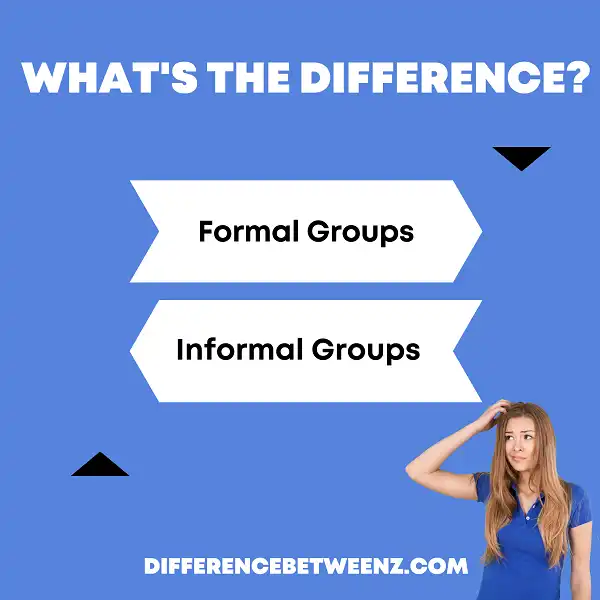Many people belong to groups, both formal and informal. However, there is a big difference between the two. Formal groups are those that have been created with a specific purpose in mind, while informal groups are ones that develop naturally. Most people are a part of more informal groups than formal groups, but it’s important to understand the benefits and drawbacks of both types. Let’s take a closer look at each one.
What are Formal Groups?
- Formal groups are special types of groups that are created for a specific purpose, usually within an organization. Formal groups typically have a pre-determined structure, and their members often have specific roles to play.
- Formal groups can be temporary or permanent, and they may be task-oriented or relationship-oriented. Formal groups are often created in order to complete a specific project or achieve a specific goal.
- However, formal groups can also serve as a way for members to socialize and build relationships. Formal groups are an important part of many organizations, and they can play a valuable role in helping members to achieve their goals.
What are Informal Groups?
- Informal groups are social groups that develop naturally, without any formal structure or organization. Most people belong to at least one informal group, such as a family, a group of friends, or a workplace team.
- Informal groups often have their own unique culture, with shared traditions and norms. While informal groups can provide support and a sense of belonging, they can also create conflict and exclusion.
- For example, cliques often form within informal groups, excluding others who don’t fit in. As a result, it’s important to be aware of the potential downside of belonging to an informal group.
Difference between Formal Groups and Informal Groups
Formal groups are created when an organization or company assigns people to work together on a specific task. Formal groups typically have a clear set of objectives and a designated leader. Informal groups, on the other hand, are not created by an organization. Instead, they emerge naturally as people with similar interests or goals come together.
Informal groups may not have a clearly defined purpose or structure, but they can still be powerful forces within an organization. Formal groups can be an important source of information and support, but informal groups can be equally helpful in creating a sense of community and facilitating communication. Both types of groups play a vital role in the functioning of any organization.
Conclusion
Now that we’ve explored the two different types of groups, it’s important to understand how they differ. Formal groups are typically more task-oriented and have specific goals in mind when they come together. They also tend to be more hierarchical, with a clear leader or decision-maker. Informal groups, on the other hand, are much less structured and often come together for social reasons. There is usually more equality among members, and decisions are made through consensus.


